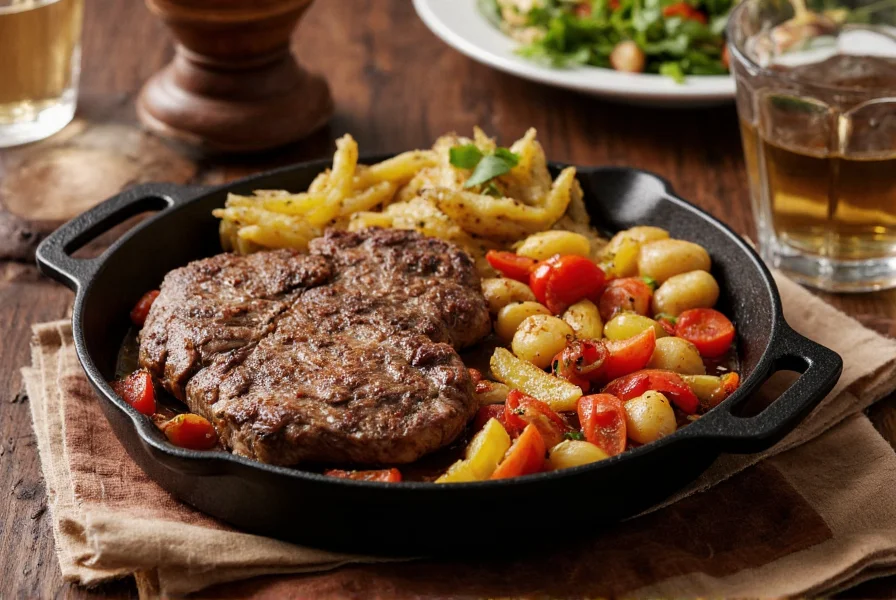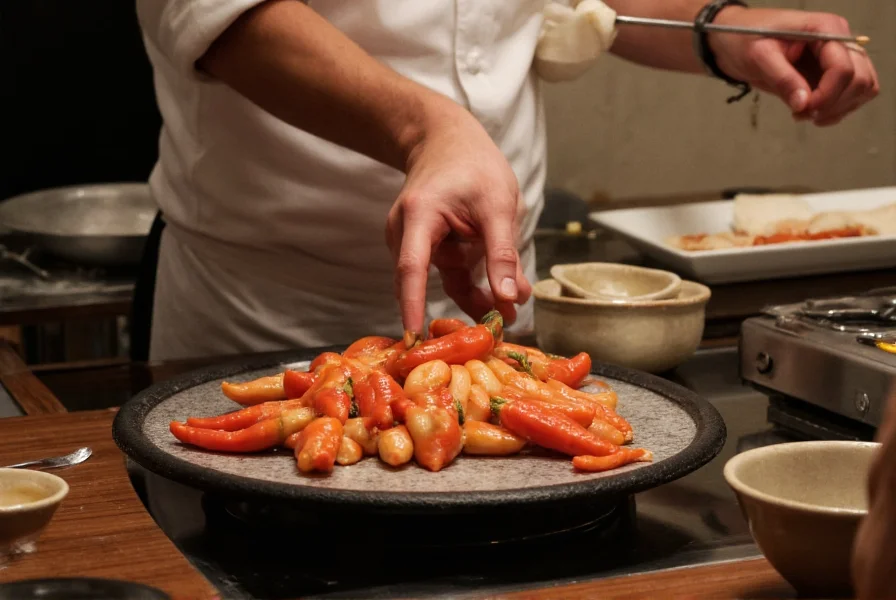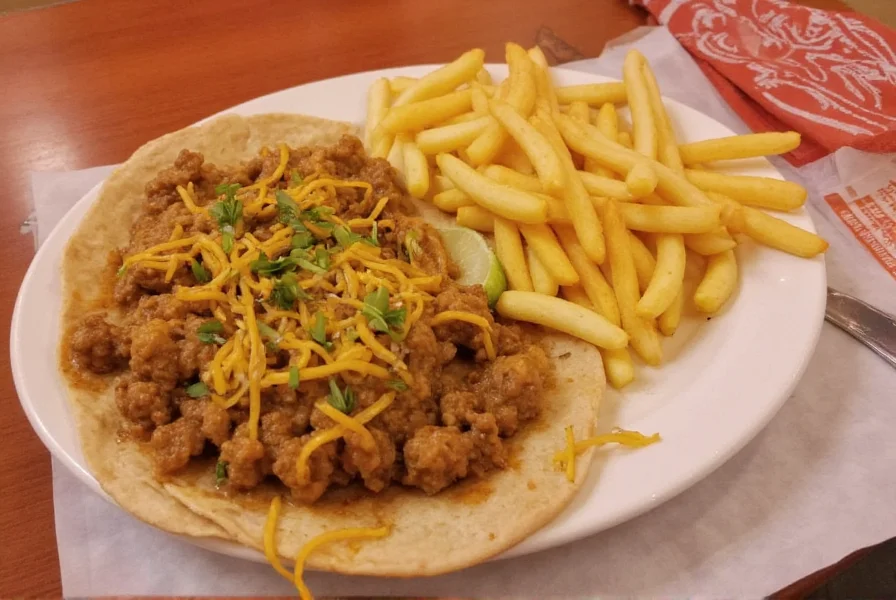Pepper Lunch has become a global culinary phenomenon, captivating food enthusiasts with its distinctive preparation method and bold flavors. This Japanese specialty represents more than just a meal—it's an experience that engages multiple senses through its dramatic presentation and aromatic cooking process.
The Origins of Pepper Lunch
The Pepper Lunch concept emerged in Japan during the late 20th century, though its exact origins remain somewhat debated among culinary historians. What began as a simple teppanyaki preparation evolved into a standardized dining experience when the Pepper Lunch restaurant chain formalized the preparation method in the 1990s. The dish quickly gained popularity throughout Japan before expanding internationally, particularly across Asian markets and eventually reaching Western countries.
Unlike traditional teppanyaki which often involves elaborate chef performances, Pepper Lunch focuses on simplicity and consistency. The signature element is the "sizzle plate"—a cast-iron platter heated to approximately 260°C (500°F) that continues cooking the ingredients tableside. This method creates a distinctive searing effect while allowing diners to customize their meal's doneness.
Understanding the Pepper Lunch Preparation Method
The authentic Pepper Lunch experience follows a precise sequence that contributes to its unique appeal:
| Preparation Stage | Temperature | Key Characteristics |
|---|---|---|
| Plate Heating | 260°C (500°F) | Cast iron plate preheated for 15-20 minutes |
| Initial Cooking | 200-230°C (390-450°F) | Protein sears immediately upon contact, creating crust |
| Tableside Cooking | 150-180°C (300-350°F) | Food continues cooking at table, allowing customization |
| Final Presentation | 80-100°C (175-210°F) | Optimal serving temperature for flavor release |
The cooking process begins with the cast-iron plate, which retains heat exceptionally well. When ingredients hit the surface, they immediately begin searing while releasing aromatic steam that carries the dish's signature fragrance. The pepper sauce—typically a blend of black pepper, soy sauce, garlic, and other seasonings—is added at a precise moment to create a flavorful crust without burning.
Key Ingredients and Variations
While steak remains the most popular protein choice for Pepper Lunch, the concept has expanded to include various proteins and regional adaptations:
- Traditional Beef Pepper Lunch: Features high-quality sirloin or ribeye with the signature pepper sauce
- Chicken Pepper Lunch: Uses tender chicken breast with a slightly modified seasoning blend
- Seafood Variations: Includes salmon, shrimp, or scallops with citrus-infused sauces
- Vegetarian Options: Emerging in Western markets using plant-based proteins
The essential components that define an authentic Pepper Lunch experience include:
- The properly heated cast-iron plate (critical for the sizzling effect)
- Freshly ground black pepper as a primary seasoning element
- High-quality protein cut to appropriate thickness
- Signature sauce applied at the correct cooking stage
- Rice served underneath to absorb flavorful juices
Distinguishing Pepper Lunch from Similar Dishes
Many confuse Pepper Lunch with other Japanese hot plate dishes, but several factors set it apart:
Unlike traditional teppanyaki which often involves theatrical chef performances and multiple ingredients cooked simultaneously, Pepper Lunch focuses on simplicity and consistency. The dish typically features just one primary protein with minimal accompaniments, allowing the quality of ingredients and precision of cooking to shine.
Compared to yakiniku (Japanese barbecue), Pepper Lunch uses a different cooking surface (flat iron plate versus grill) and features a signature pepper-based sauce rather than dipping sauces. The temperature control and cooking sequence also differ significantly.
Experiencing Authentic Pepper Lunch
For those seeking an authentic Pepper Lunch experience, certain elements indicate quality preparation:
First, the plate should arrive at the table visibly smoking with intense heat. When the ingredients hit the surface, they should produce an immediate, vigorous sizzle—not a gentle simmer. The aroma should be predominantly peppery with supporting notes from the cooking protein.
At home preparation requires special equipment but can yield satisfying results. Home cooks need a properly seasoned cast-iron skillet preheated in a hot oven, quality ingredients, and attention to timing. The most common mistake is insufficient plate heating, which prevents the characteristic sear and sizzle.

Cultural Significance and Global Adaptation
Pepper Lunch represents an interesting evolution in Japanese culinary culture—taking traditional teppanyaki techniques and standardizing them for consistent, accessible dining. The concept has successfully adapted to various international markets while maintaining its core identity.
In Japan, Pepper Lunch restaurants often operate with efficient, streamlined service reflecting the country's fast-casual dining culture. International versions sometimes incorporate local preferences, such as offering spicier sauces in Southeast Asia or larger portions in Western markets.
The dish's popularity stems from its multisensory appeal: the dramatic presentation, enticing aromas, interactive element of tableside cooking, and bold flavors create a memorable dining experience that transcends simple sustenance.

Conclusion
Pepper Lunch stands as a testament to Japanese culinary innovation—transforming simple ingredients through precise technique into an engaging dining experience. Its global success demonstrates how a well-executed concept can transcend cultural boundaries while maintaining authenticity. Whether enjoyed in a specialized restaurant or carefully recreated at home, the distinctive sizzle, aroma, and flavor profile of a properly prepared Pepper Lunch continues to captivate diners worldwide.
What makes Pepper Lunch different from regular steak?
Pepper Lunch differs through its specific cooking method using an extremely hot cast-iron plate that continues cooking tableside. The signature pepper-based sauce is applied during cooking rather than after, creating a distinctive crust. The rice base absorbs the flavorful juices, and the entire presentation creates a multisensory experience beyond standard steak preparation.
Can you make authentic Pepper Lunch at home without special equipment?
While challenging, you can approximate Pepper Lunch at home using a well-seasoned cast-iron skillet preheated in a 500°F oven for 20 minutes. The key is achieving sufficient surface temperature (around 500°F) to create the characteristic sizzle and sear. Avoid non-stick pans as they cannot withstand the necessary heat. Proper timing for sauce application remains critical for authentic results.
Is Pepper Lunch actually Japanese in origin?
Yes, Pepper Lunch originated in Japan. While teppanyaki cooking methods have existed in Japan for centuries, the specific Pepper Lunch concept—with its standardized preparation, signature sauce, and tableside cooking experience—was developed and popularized by the Pepper Lunch restaurant chain that began in Japan during the 1990s before expanding internationally.
What type of pepper is used in authentic Pepper Lunch?
Authentic Pepper Lunch typically uses coarsely ground black pepper as the primary seasoning element. Some variations may incorporate a blend of black, white, and pink peppercorns for complexity, but the dominant flavor profile comes from freshly ground black pepper combined with soy sauce, garlic, and other seasonings in the signature sauce.
Why does the plate keep cooking after it leaves the kitchen?
The cast-iron plate retains heat exceptionally well due to its thermal mass. Properly preheated to approximately 500°F, the plate continues radiating sufficient heat (around 350°F) to finish cooking the ingredients tableside. This thermal retention property of cast iron allows the cooking process to continue, enabling diners to customize doneness while enhancing flavor development through continued caramelization.
Frequently Asked Questions
What makes Pepper Lunch different from regular steak?
Pepper Lunch differs through its specific cooking method using an extremely hot cast-iron plate that continues cooking tableside. The signature pepper-based sauce is applied during cooking rather than after, creating a distinctive crust. The rice base absorbs the flavorful juices, and the entire presentation creates a multisensory experience beyond standard steak preparation.
Can you make authentic Pepper Lunch at home without special equipment?
While challenging, you can approximate Pepper Lunch at home using a well-seasoned cast-iron skillet preheated in a 500°F oven for 20 minutes. The key is achieving sufficient surface temperature (around 500°F) to create the characteristic sizzle and sear. Avoid non-stick pans as they cannot withstand the necessary heat. Proper timing for sauce application remains critical for authentic results.
Is Pepper Lunch actually Japanese in origin?
Yes, Pepper Lunch originated in Japan. While teppanyaki cooking methods have existed in Japan for centuries, the specific Pepper Lunch concept—with its standardized preparation, signature sauce, and tableside cooking experience—was developed and popularized by the Pepper Lunch restaurant chain that began in Japan during the 1990s before expanding internationally.
What type of pepper is used in authentic Pepper Lunch?
Authentic Pepper Lunch typically uses coarsely ground black pepper as the primary seasoning element. Some variations may incorporate a blend of black, white, and pink peppercorns for complexity, but the dominant flavor profile comes from freshly ground black pepper combined with soy sauce, garlic, and other seasonings in the signature sauce.
Why does the plate keep cooking after it leaves the kitchen?
The cast-iron plate retains heat exceptionally well due to its thermal mass. Properly preheated to approximately 500°F, the plate continues radiating sufficient heat (around 350°F) to finish cooking the ingredients tableside. This thermal retention property of cast iron allows the cooking process to continue, enabling diners to customize doneness while enhancing flavor development through continued caramelization.











 浙公网安备
33010002000092号
浙公网安备
33010002000092号 浙B2-20120091-4
浙B2-20120091-4